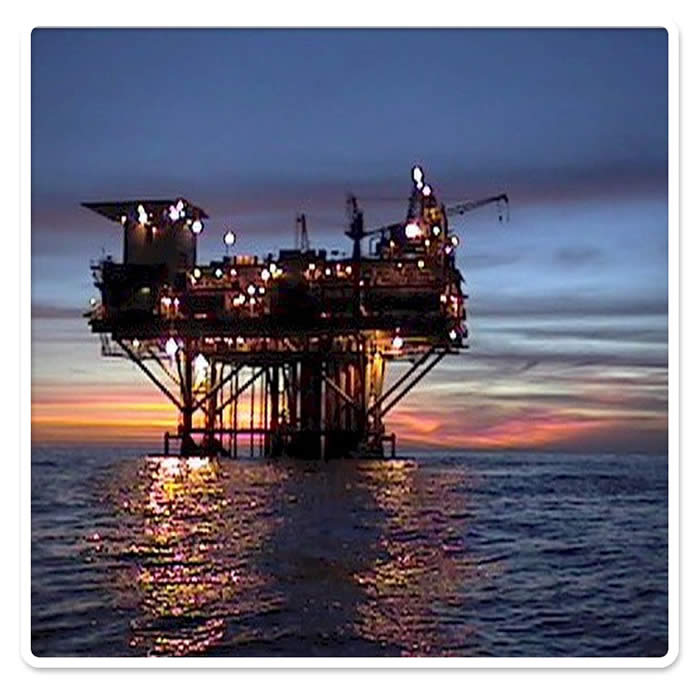Oil and gas
 Oil and gas extraction has been undertaken for many years in shelf seas but in recent years production has started to diminish, increasing the cost of extraction. With continually increasing consumer demand, hydrocarbon companies are now under significant pressure to discover new reserves. A promising source of new reserves may be the deep sea. Exploitation of deep-sea hydrocarbons began in the Gulf of Mexico in 1979, with six producing wells by 1992. This number rose to 17 by 1997 and increased exponentially to 118 by March 2006. The Gulf of Mexico now contains the deepest well to date, the Toledo well drilled at 3051 m water depth by ChevronTexaco in late 2003. There is further potential for large reserves to be exploited in deep-sea areas off the coasts of South Africa, West Africa, Brazil and the Asian - Pacific region including Malaysia, Indonesia, Brunei and India. Oil and gas extraction has been undertaken for many years in shelf seas but in recent years production has started to diminish, increasing the cost of extraction. With continually increasing consumer demand, hydrocarbon companies are now under significant pressure to discover new reserves. A promising source of new reserves may be the deep sea. Exploitation of deep-sea hydrocarbons began in the Gulf of Mexico in 1979, with six producing wells by 1992. This number rose to 17 by 1997 and increased exponentially to 118 by March 2006. The Gulf of Mexico now contains the deepest well to date, the Toledo well drilled at 3051 m water depth by ChevronTexaco in late 2003. There is further potential for large reserves to be exploited in deep-sea areas off the coasts of South Africa, West Africa, Brazil and the Asian - Pacific region including Malaysia, Indonesia, Brunei and India.
 In many parts of the world, such as the North Atlantic, offshore activities are strongly regulated to reduce pollution and the amount of waste deposited on the seabed. For example, in the UK, regulation has led to noticeable reductions in the levels of discharges recorded, including carbon dioxide emissions, chemical discharges and contaminated drill cuttings. In the immediate area of drilling activities, pollution from the leakage and dumping of contaminated fluids, deposition of drill cuttings laced with drilling muds and the deployment of anchors and structure development are often an unavoidable product of the extraction process. In many parts of the world, such as the North Atlantic, offshore activities are strongly regulated to reduce pollution and the amount of waste deposited on the seabed. For example, in the UK, regulation has led to noticeable reductions in the levels of discharges recorded, including carbon dioxide emissions, chemical discharges and contaminated drill cuttings. In the immediate area of drilling activities, pollution from the leakage and dumping of contaminated fluids, deposition of drill cuttings laced with drilling muds and the deployment of anchors and structure development are often an unavoidable product of the extraction process.

|
